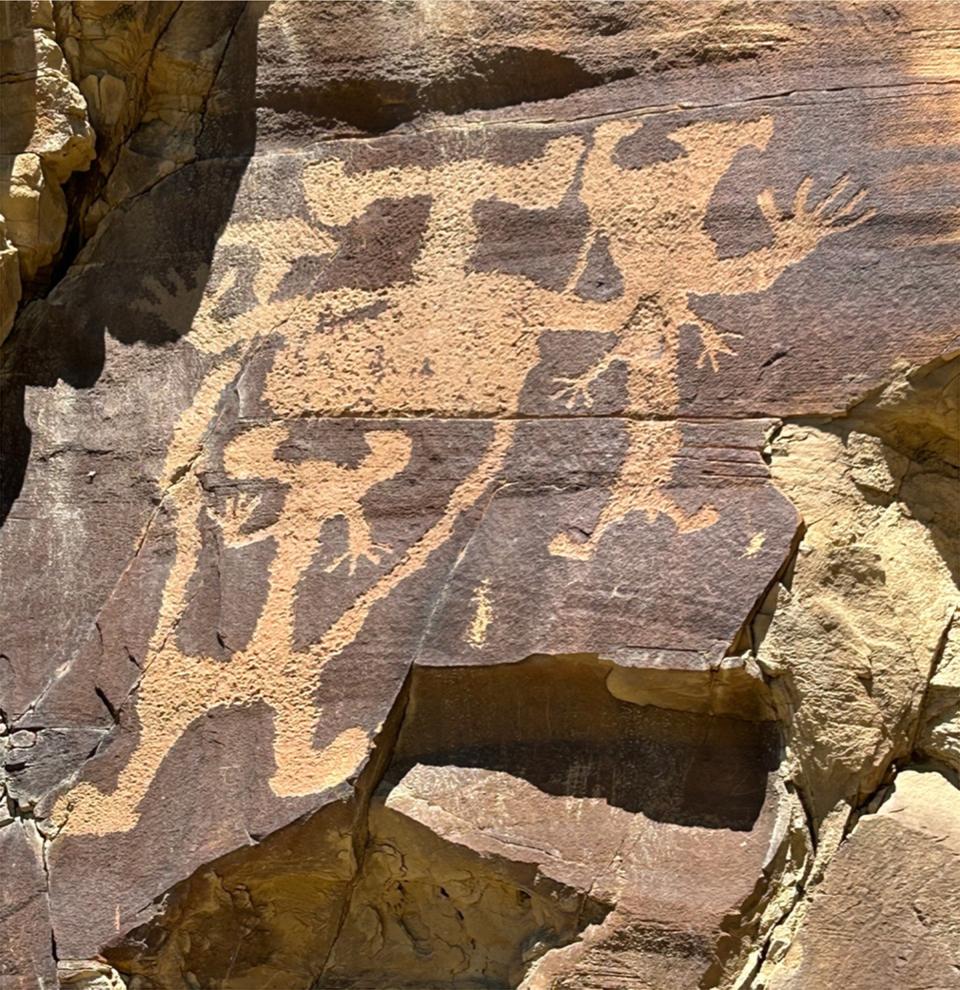Wyoming’s Bony Back Pocket
Until our bus pulled into Kirby, north of Thermopolis, last weekend on the Wyoming Historical Society’s annual June trek, we had not caught up with the news that Wyoming Whiskey has been bought by the Scots. But that was only the first of the day’s surprises. The tour connected half a dozen historic spots around the southern end of the Bighorn Basin—what writer Emilene Ostlind has called “Wyoming’s bony back pocket”.

From territorial times through early statehood, the area was hard to get to and attracted ne’er do wells like the Wild Bunch. More White people began moving in after 1896 when the Eastern Shoshone and Northern Arapaho tribes sold the hot springs at what’s now Thermopolis to the U.S. government. But it was coal that lured the railroad; building down from the north, the Burlington reached Kirby in 1907, and built short spurs from there to new coal mines at Gebo and Crosby.
Kirby was our first stop. All that remains from that earlier time is the Kirby jail, a little building of sandstone blocks with two tiny, two-bunk metal-grid cells inside where you’d never want to spend the night. Three miles to the northwest, little remains of the coal-company town of Gebo but a few rock walls and a lot of stories. Fortunately, author Lea Schoenewald was with us to tell us some; as a child she often visited her grandmother there. Gebo once boasted 2,000 residents, a K-12 school, stores, churches, bands, baseball teams and pool halls.
On gravel roads we continued west across the middle of the basin, crossed Highway 120 (the road from Thermopolis to Cody) and stopped next at Legend Rock State Historic Site—for many of us who like these places the clearest and most vivid pieces of ancient rock art in the state. Some of the images, archaeologists say, may date back 11,000 years. To our eyes, they look to come straight out of dreams. But at least one story from the Crow tribe, the volunteer docent told us, says, no, the shaman didn’t make the picture. The shaman slept and during his sleep, figures came up and out from the underworld and they made the pictures.
From there we headed south along the west side of the basin, passing through the historic, still producing Grass Creek and Hamilton Dome oil fields and passing the Arapaho Ranch, an operation of the Northern Arapaho Tribe since 1940. Before that, it was headquarters for the Padlock Ranch, a huge operation founded in the late 1860s by a Col. Sliney, who came over to the Bighorn Basin from Fort Washakie in the Wind River valley. When we got to Owl Creek we turned west, upstream.
On the way up we passed the site of the cabin of J.D. Woodruff, one of the earliest settlers in the basin. Woodruff’s holdings were purchased in the late 1870s by another officer from Fort Washakie, R.A. Torrey, and became the famous Embar Ranch. R.A.’s brother Jay Torrey raised a regiment of rough riders in the Spanish American War.
Continuing up Owl Creek we came at last to Anchor Reservoir and the infamous Anchor Dam, completed in the early 1960s. Thanks to porous rock all around the reservoir, what looked like a perfect damsite turned out to be a slow-motion disaster. The dam is still there, but the reservoir has only ever been able to hold about quarter of the water engineers expected would fill it at the time. Water has never gone over the spillway.
As for Wyoming Whiskey? The high-end, specialty bourbon company still employs about three dozen people in little Kirby, Wyoming. The business was founded in 2012 by Kate Mead, Brad Mead and their partner David DeFazio. (Brad Mead is a brother of former Wyoming Gov. Matt Mead; they are grandsons of former Wyoming Gov. and U.S. Sen. Cliff Hansen.) In 2018, with the business growing, they sold a 35 percent interest in the firm to Edrington, a Glasgow-based business that markets Macallans single-malt scotch and the moderately priced Famous Grouse scotch, among other brands. In April 2023, the Wyoming partners sold a controlling interest; Edrington now owns 80 percent.
Something seems to be coming full circle here. A number of Scots invested heavily in cattle operations in Wyoming Territory in the 1870s and ‘80s. Some did well; the largest and best known, the Swan Land and Cattle Company, ran into trouble. Still, then, as now, people welcomed the influx of capital. We say, cheers!
